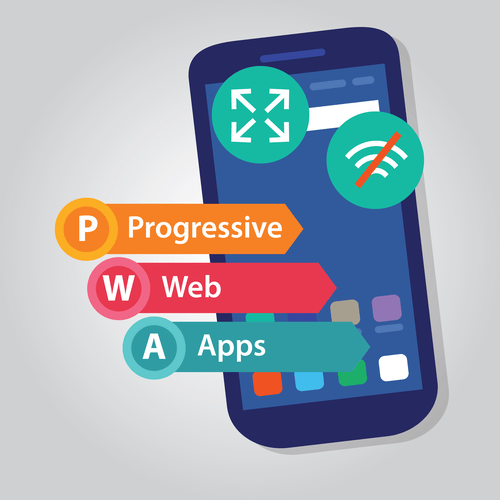White-box testing verifies the internal structures or workings of a program, as opposed to the functionality exposed to the end-user. In white-box testing, an internal perspective https://www.globalcloudteam.com/ of the system , as well as programming skills, are used to design test cases. The tester chooses inputs to exercise paths through the code and determine the appropriate outputs.
Functional testing checks the application’s processes against a set of requirements or specifications. Non-functional testing assesses application properties that aren’t critical to functionality but contribute to the end-user experience, like performance and reliability under load. The most advanced approach to testing categories includes an extensive mix of functional and non-functional testing.
What is Non-Functional Testing? A Complete Guide
If you only decide to work with particular tools and technology after you start non-functional testing, this can hold up the testing process and cause confusion among testers. Before you start non-functional testing, check that you’ve got everything you need to carry out thorough non-functional tests in a prepared environment. Appium is a free software testing tool that’s most suitable for testing mobile applications across a variety of different platforms including both iOS and Android devices. Appium offers users a lot of flexibility to devise their own testing frameworks and strategies while benefitting from the automation abilities that Appium offers. Making sure that everyone knows which testing tools to use and how to use them before non-functional testing starts reduces the risk of having to pause testing or re-do tests because of insufficient knowledge. When performing non-functional testing, testers should expect the system to crash regularly, especially when pushing it to its limits for stress testing and other performance tests.

With non-functional testing, you can improve your software’s quality and end-user experience. For example, performance and reliability under load aren’t functional components but can make or break the user experience. User acceptance testing checks if the system satisfies users’ requirements and preferences under specific conditions. The main goal is to ensure that the application behaves how the users want.
Non-functional Testing Parameters
And it helps ensure a high level of product quality, performance, and usability – all of which lead to higher user satisfaction. Performance tests are a type of non-functional test that checks how well different software components work. Rather than testing their functionality, which is what functional testing does, performance tests may test response times, bottlenecks, and failure points.
- Volume testing is a type of testing that exists to verify what happens when large volumes of data are added to the database at once.
- Recovery tests involve forcing the software system to fail to test how well the system recovers itself after a crash.
- Allows you to evaluate your design on many screen widths for a “real” test of “adaptivity” instead of predefined screen widths.
- Beta versions can be made available to the open public to increase the feedback field to a maximal number of future users and to deliver value earlier, for an extended or even indefinite period of time .
- A fault that did not reveal failures may result in a failure when the environment is changed.
- For most developers, when they think of software testing, unit tests and integration tests will come first to mind.
- Portability is important because it affects how easily end users can manage software and move it between different systems.
Safety from external and internal security threats to protect information & data- confidential or nonconfidential. The extent to which any software system can handles capacity, quantity and response time. The parameter defines how a system is safeguarded against deliberate and sudden attacks from internal and external sources. Improve and enhance knowledge of the product behavior and technologies in use. Collect and produce measurements, and metrics for internal research and development.
Entry-Level Programmer/Software Developer Jobs To Pursue in 2023
The same practices are commonly found in other development models, but might not be as clear or explicit. Is sometimes called snapshot testing or Golden Master Testing unlike many other forms of testing, this cannot detect failures automatically and instead requires that a human evaluate the output for inconsistencies. Some messages may be created automatically at run time and the resulting string may be ungrammatical, functionally incorrect, misleading or confusing. A smoke test is used as a build acceptance test prior to further testing, e.g., before integration or regression. UAT as well as alpha and beta testing are described in the next testing types section. Continuous Integration and Continuous Deployment (CI/CD) are key for organizations wanting to deliver software at scale.

When conducting manual non-functional tests, testers must gather information about the software, create individual test cases that match the test plan, and execute those test cases manually. You may have already carried this step out earlier if you’re performing non-functional testing as part of system testing and following your system testing plan. A test plan outlines all the tests that you need to carry out and how you’re intending to carry them out. Before you can start non-functional testing, it’s important to verify that you’re ready for this phase of testing.
Define measurable requirements
When carrying out non-functional testing, the purpose of the tests should be specific to the design specifications of the software. Interoperability testing is a type of non-functional testing that checks how well a software system interfaces with other software systems. Non-functional testing improves and enhances the testing team’s knowledge of the product behavior and the technologies that it utilizes.

You may find some difference in the above classification in different books and reference materials. It refers to a portion of the software system what is non-functional testing that can be converted for use in another application. The flexibility of software to transfer from its current hardware or software environment.
What are the types of Non-Functional Testing?
Before diving deeper, it’s important to distinguish between manual and automated tests. Automated testing and test-driven development improve code reliability, which help minimize the probability of new builds from breaking existing code. Stress tests examine how software behaves under a high user load or other complex circumstances. The end user benefits from having a high-quality product built according to requests and specifications. Once a defect is identified, it should be recorded on a formal tracking system that’s accessible to the entire project team.
Functional testing can also include closed-box testing of the complete application. Closed-box testing treats the application’s outputs holistically without examining its inner workings. Many engineers gravitate toward it when writing functional tests to complement their non-functional tests.
Examples of non-functional test cases
Non-functional Testing is a type of Software Testing that is performed to verify the non-functional requirements of the application. It verifies whether the behavior of the system is as per the requirement or not. Non-Functional testing is a software testing technique that checks the non-functional attributes of the system. Non-functional testing is defined as a type of software testing to check non-functional aspects of a software application. It is designed to test the readiness of a system as per nonfunctional parameters which are never addressed by functional testing. In the user acceptance phase of software testing, developers provide part or all of the application to end users or their representatives to model real-world interactions and functionality.
